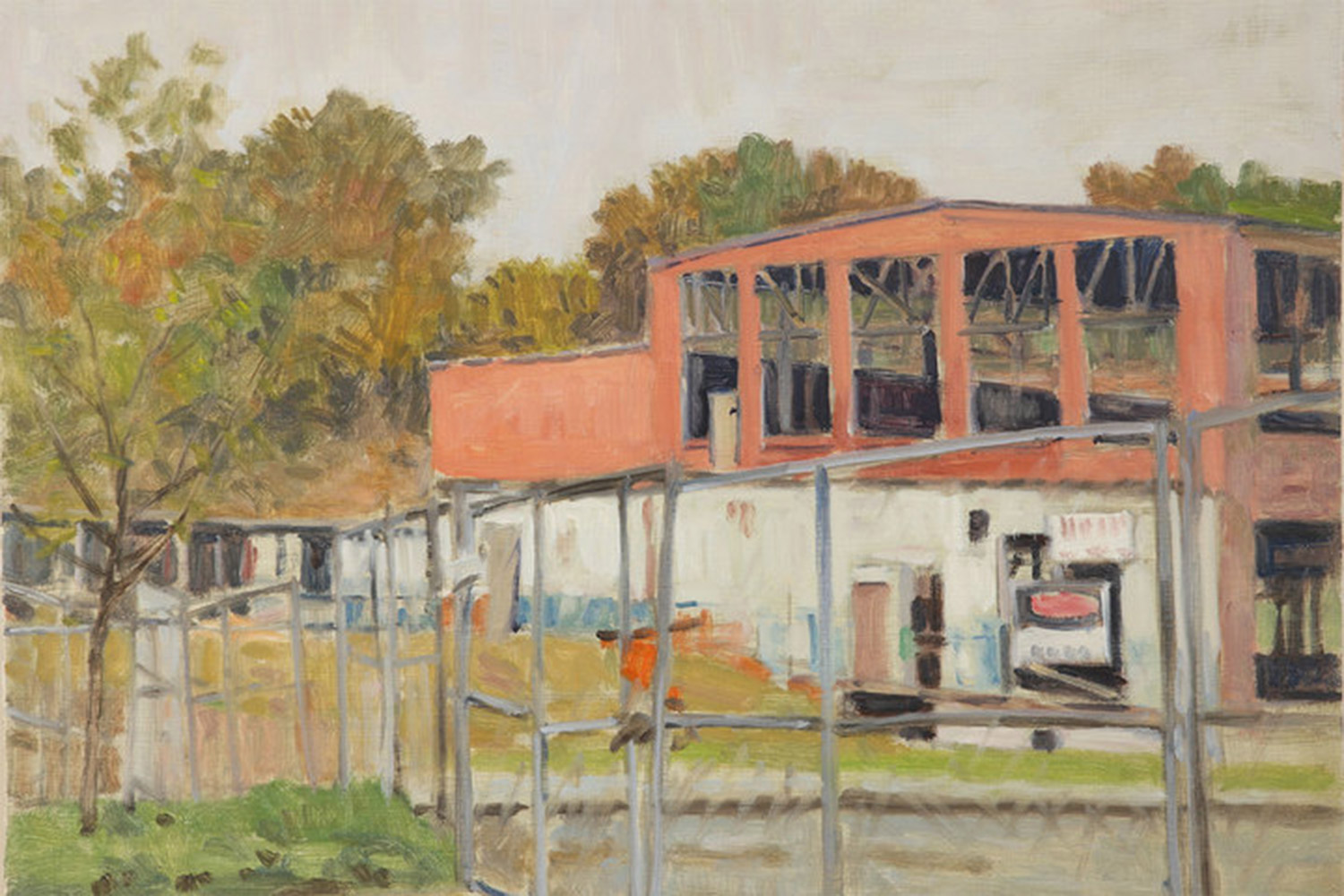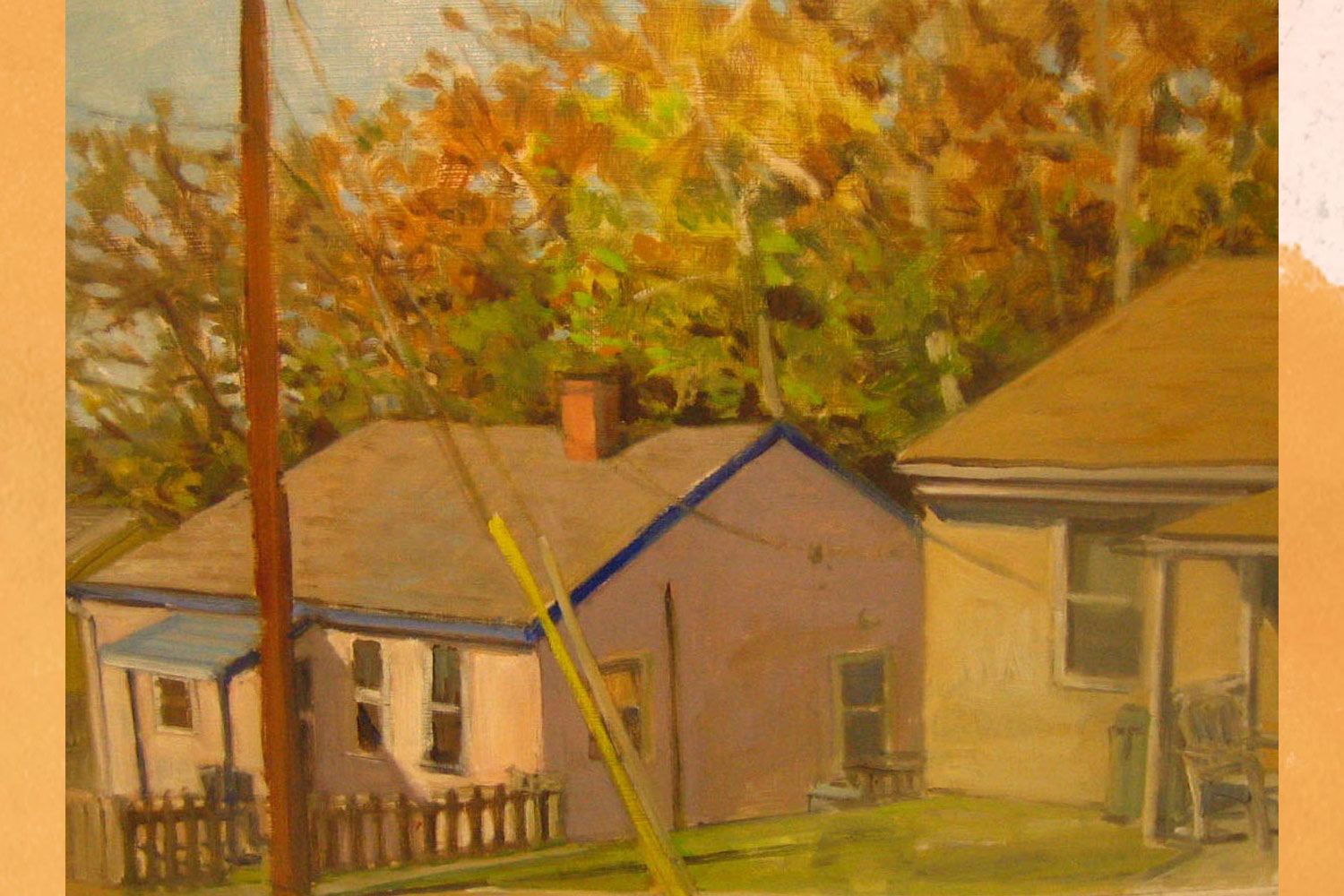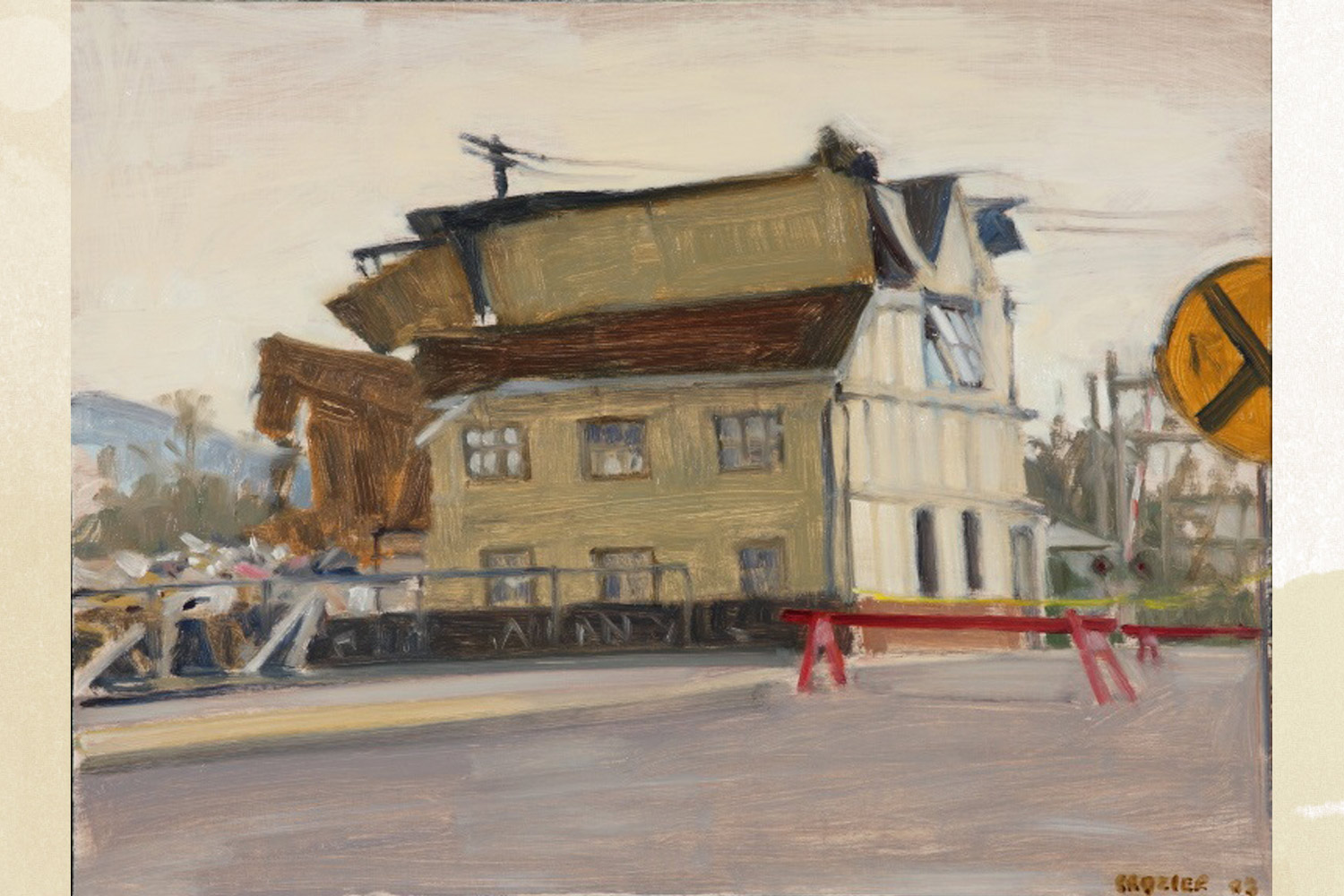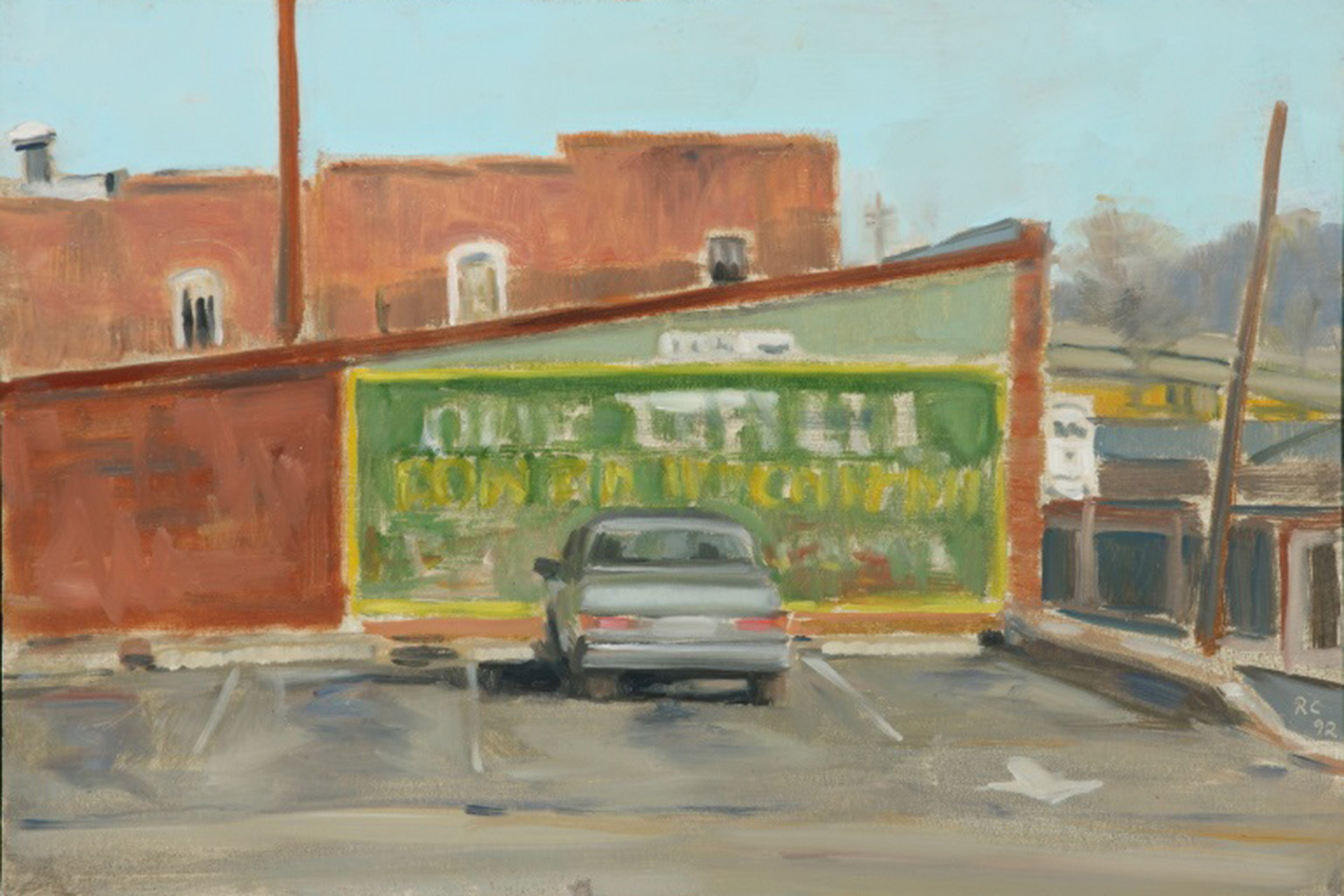Most days, University of Virginia Professor Emeritus Richard Crozier can be found painting in the passenger seat of his Volkswagen, a Masonite board propped in his lap to capture whatever local scene has caught his eye.
Crozier’s paintings, collected in a new book to be released Saturday, preserve a street-level view of UVA’s hometown through decades of remarkable growth and change. Though many painters have depicted Charlottesville over the years, Crozier’s focus is unusual in that he passes over famed landmarks in favor of smaller scenes that form the backdrop for everyday life in Central Virginia.
“He frequently chooses places, corners or buildings that most of us drive by and don’t pay attention to,” said Richard Guy Wilson, UVA’s Commonwealth Professor of Architectural History, who wrote an essay to accompany Crozier’s paintings. “In many cases, he has returned to the same scene a number of years later and you can see the changes that take place.”
Crozier’s new book, “Repository of Missing Places” – published by Charlottesville’s Chroma Projects Art Laboratory with support from the Virginia Foundation for the Humanities – includes essays from faculty members, art critics and local historians. Proceeds will benefit the Piedmont Council for the Arts, which supports the arts in Charlottesville and Albemarle County.
 Charlottesville’s Frank Ix & Sons textile factory building, as painted on Oct. 27, 2006. Today, the former textile factory is a mixed-use area that includes a park, arts and crafts spaces, retail and office space.
Charlottesville’s Frank Ix & Sons textile factory building, as painted on Oct. 27, 2006. Today, the former textile factory is a mixed-use area that includes a park, arts and crafts spaces, retail and office space.
The book’s roughly 50 paintings were chosen from thousands that Crozier has completed. They emphasize how much Charlottesville has changed in the 42 years since Crozier was hired as a professor in UVA’s McIntire Department of Art, where he taught until 2011.
“Many of the scenes that interest me are things that are in the process of change,” Crozier said. “Charlottesville has certainly gone from a quiet little town to a small city, and it is growing at an astonishing speed right now. When I drive down West Main Street, for example, only a handful of the buildings are the same as they were when I arrived.”
 This painting shows Rayon Street in the Belmont neighborhood as it was on Nov. 5, 2015. During World War II, the street was home to housing designed by Frank Ix & Sons to attract and retain workers for their textile factory.
This painting shows Rayon Street in the Belmont neighborhood as it was on Nov. 5, 2015. During World War II, the street was home to housing designed by Frank Ix & Sons to attract and retain workers for their textile factory.
Crozier’s paintings typically take him between one and two hours. He completes the bulk of the work right in his front seat, now dotted with smatterings of paint from years of doubling as an artist’s studio. There, Crozier can stay out of the way of passersby and observe the flow of daily life.
“Painting out of my car lets me go around town and look for little things that catch my eye, often for reasons that I am not entirely aware of myself,” Crozier said.
 Continuing his interest in demolition and construction, Crozier painted the 2002 demolition of Trax nightclub, notable for hosting the Dave Matthews Band in its early years. The building was also home to a country-western nightclub called Max.
Continuing his interest in demolition and construction, Crozier painted the 2002 demolition of Trax nightclub, notable for hosting the Dave Matthews Band in its early years. The building was also home to a country-western nightclub called Max.
Some of the buildings shown in the new book have long been lost to the ravages of time or razed to make way for new construction. Other paintings show sites under construction, hinting at new structures to come. Some pages feature side-by-side paintings of sites that Crozier painted once and then returned to decades later to find them changed in ways both big and small.
“Many places now have a certain resonance for me, because I have painted them before,” he said.
 From the collection of Irv and Jackie Brownfield, this painting shows a parking lot above the C&O Restaurant in downtown Charlottesville. Crozier painted it in 1992.
From the collection of Irv and Jackie Brownfield, this painting shows a parking lot above the C&O Restaurant in downtown Charlottesville. Crozier painted it in 1992.
Crozier’s work has been featured both locally and nationally. His legacy also includes legions of students inspired by his example and encouragement.
“So much of teaching is just being as encouraging as possible, setting them to work and seeing what they do,” Crozier said. “Starting out in painting, you don’t know quite what it is you are after. You know when something feels right, but you might not know why.”
For Crozier, that “something” was Charlottesville.
“Being in Charlottesville has been very lucky for me,” he said. “There is a lot of variety, and it has provided a lot of information and inspiration to me over the years.”
Chroma Projects will host a book launch and exhibition on Saturday from 5-7 p.m. at its location on East Main Street. More information.
MEDIA CONTACT
Caroline Newman
University News Associate
Office of University Communications
[email protected] | 434-924-6856
Original Publication: UVA Today



